When Mary Wallace “Wally” Funk reached the boundary of space aboard the first crewed flight of Blue Origin’s New Shepard capsule earlier today, it marked the end of a journey she started 60 years ago. In 1961 she became the youngest member of what would later become known as the “Mercury 13”, a group of accomplished female aviators that volunteered to be put through the same physical and mental qualification tests that NASA’s Mercury astronauts went through. But the promising experiment was cut short by the space agency’s rigid requirements for potential astronauts, and what John Glenn referred to in his testimony to the Committee on Science and Astronautics as the “social order” of America at the time.
Best of the Best
Before NASA could launch the first American into space, they had to decide what qualifications their ideal astronaut should have. An early idea that the agency should pursue thrill seekers such as race car drivers or extreme sport enthusiasts made a degree of sense given the immense risks involved, but it was ultimately decided that it would be more useful to the program if the occupants of these early spacecraft were experienced pilots with a science or engineering background. The hope was such individuals could give valuable feedback on the craft’s design and performance, and should the need arise, diagnose and potentially even fix an issue aboard the spacecraft themselves.
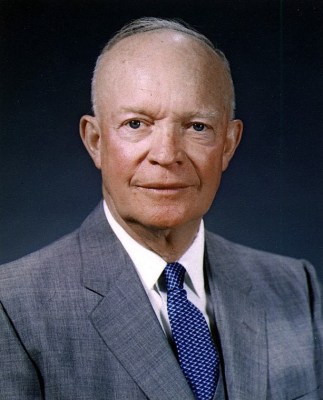
So in addition to meeting age and fitness requirements, applicants for Project Mercury needed to be college educated in a STEM subject and have experience flying jet aircraft. While there was little of what could traditionally be considered piloting to be done with these early spacecraft, having experience with the speed, altitude, and complexity associated with flying jets was seen as a important prerequisite.
President Eisenhower, who himself learned to fly while in the Army, insisted that the final selection be further limited to active duty military test pilots; the idea being that such individuals would not only be in peak physical condition, but would be uniquely qualified to operate experimental vehicles and have a higher than average tolerance for risk.
While the extremely narrow criteria used to select the first Mercury astronauts was arguably justified, it did invalidate many excellent candidates. Legendary test pilot Chuck Yeager, who by all accounts should have been on the short list for NASA’s human space program, was out of the running as he never attended college. Neil Armstrong, who by this time had already piloted the X-15 to incredible speeds and altitudes, was also excluded from taking part as he hadn’t been in active duty since 1952.
The Right Stuff
While no NASA document specifically stated Project Mercury astronauts had to be males, the military service requirement made it impossible for a woman to make it through the selection process. There were certainly highly qualified female pilots in the United States, many who served their country by testing and transporting military aircraft as Women Airforce Service Pilots (WASPs) during the Second World War, but they were all civilians. Of course this was hardly a surprise, as the Air Force wouldn’t start accepting female pilots for another 15 years.
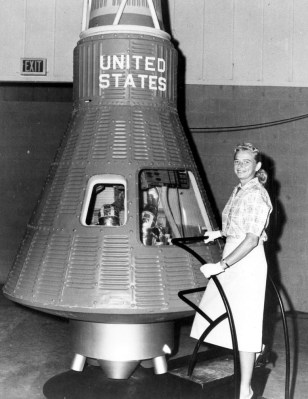
This de facto discrimination didn’t go unnoticed by Jacqueline Cochran, a prominent female aviator and the head of the WASP program during the war. Cochran was not only a woman of considerable influence and wealth, but had a close personal friendship with William Randolph Lovelace, the chairman of the NASA Special Advisory Committee on Life Sciences. Convinced that women could be effective astronauts if they were simply given the chance, the two launched a privately funded project that aimed to put female volunteers through the same rigorous qualification process that NASA used for Project Mercury.
In 1960 Geraldyn “Jerrie” Cobb was invited to not only be the first woman to undergo the grueling tests, but to help identify other potential candidates for what was being called the First Lady Astronaut Trainees (FLATs). Having previously set endurance, altitude, and speed records, Cobb was an ideal choice for the program and was able to complete all three phases of NASA’s astronaut qualification exam. In fact, her results put her in the top 2% of candidates; a figure better than some of the men that were ultimately selected to fly on Project Mercury.
Encouraged by this early success, Lovelace and Cobb invited nineteen more women to go through the tests. Several of the candidates were well known in the air racing community, and all were accomplished pilots with more than 1,000 hours of flight experience.
An Experiment Cut Short
Twelve of the women who were invited to become FLATs passed the first phase of the trials at Lovelace’s clinic in Albuquerque, New Mexico. However due to family and professional commitments only two candidates, Wally Funk and Rhea Hurrle, were able to continue on to the second phase of tests. This part of the program consisted of psychological and neurological examinations, including long periods of time spent in a sensory deprivation tank, where it was said the women outperformed the men by a considerable margin.
Unfortunately, neither woman was able to progress to the final phase of testing. Just a few days before the tests were set to begin at the Naval School of Aviation Medicine in Florida, the project was halted. Without the backing of NASA or the military, Lovelace was informed that the candidates would not be permitted to use the government facilities, aircraft, and equipment that was required to qualify the women.
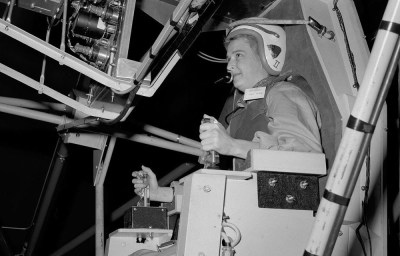
In an effort to get Lovelace’s program the appropriate clearances, Jerrie Cobb and other FLATs petitioned President John F. Kennedy and Vice President Lyndon B. Johnson. In July of 1962 a Congressional hearing was arranged, called the Special Subcommittee on the Selection of Astronauts, that aimed to determine if gender discrimination played a part in NASA’s astronaut selection process.
When called to testify, astronauts John Glenn and Scott Carpenter pointed out that regardless of how well the FLATs did in their physical and mental exams, none of them met the requirement of being an active duty military test pilot. But Glenn also admitted that NASA’s stipulation that candidates hold a STEM degree was actually waived in his case, as the agency was willing to count his engineering experience as an equivalent. In response, Congressman James Fulton of Pennsylvania questioned why NASA couldn’t establish a civilian flight experience equivalency for applicants who weren’t military pilots.
But to the surprise of many, the most damning testimony against Lovelace’s program ended up coming from the woman who helped start it, Jacqueline Cochran. While she maintained that exploring how the female mind and body fared against the rigors of spaceflight was a worthy endeavor, it was her opinion that the FLATs and the debate around them had become detrimental to NASA’s primary focus. If America was going to beat the Soviet Union to the Moon, Cochran said it was “natural and proper” that the nation’s astronauts be selected from “the group of male pilots who had already proven by aircraft testing and high speed precision flying that they were experienced, competent and qualified to meet possible emergencies in a new environment.”
A Lasting Impression
Despite Lovelace’s groundbreaking research, the hard work of the FLATs, and Jerrie Cobb’s passionate testimony before the Special Subcommittee on the Selection of Astronauts, no women were selected for NASA’s Gemini or Apollo programs. In the end it was the Soviet Union that launched the first woman into space when Valentina Tereshkova conducted her solo mission in 1963; twenty years before NASA sent Sally Ride up on STS-7.
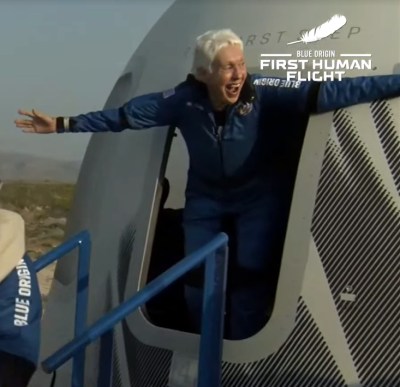
But the mark these women left on America’s space program was not forgotten. Eileen Collins, the first woman to pilot the Space Shuttle, invited the surviving FLATs to her launch in 1995. Now known in the media as the Mercury 13, the women were given a VIP tour of Kennedy Space Center and the Space Shuttle launch facilities.
Until Wally Funk accompanied Jeff Bezos on the first crewed flight of his company’s suborbital spacecraft, the history books would have recorded that none of the FLATs ever achieved their goal of traveling to space. The commercial mission has not only helped validate the work done by these pioneering women, but allowed Funk to blaze a new trail entirely. She might have missed the chance to be one of America’s first female astronauts, but at 82, she’s now set the record for being the oldest.
Though it might not be an official record, there’s no astronaut in the history of human spaceflight that has ever waited longer for the chance to put their training into practice. Congratulations, Wally Funk.

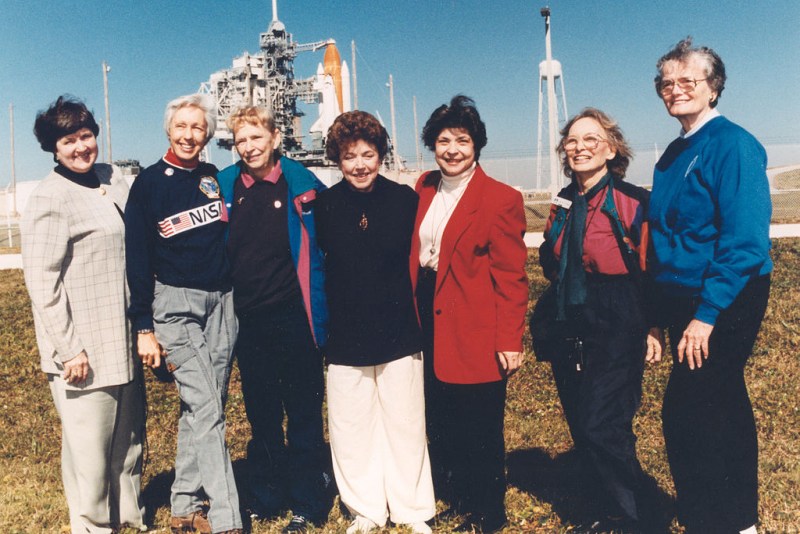













Imagine the changes she has seen, and seen through.
Space tourist –> pioneering astronaut? But she went about 19 miles higher than Allen Shepard, which is big deal in that time frame. Being the oldest is now “blazing a trail”, so we all have a goal to strive for: to be the oldest something!
Before you post a knee-jerk reaction you should look her up. She is not a space tourist she is a very experienced member of the aviation community. If Bezos hadn’t invited her she would never have been able to afford the flight.
Hmm, She is a Virgin Galactic ticket holder! Granted, these are a lot cheaper than BO’s but still not that cheap.
I’m just referring to the trail blozer moniker up there somewhere. The headline says “This Group Of Women Tried To Break Into Astronaut Program In 1960s; One Just Made It” which in English means that she just made it into the NASA astronaut program, which is a silly thing to say. I gave credit for going well beyond Allen Shepard’s sub-orbital flight in the Mercury program. But lets face facts. This automated flight is exactly what the Mercury Seven fought against: a spam in the can flight. And 80 is the new 50, so relax.
Yeah, writing headlines is a tough one sometimes, and we debated whether or not we’d receive an avalanche of pedantry on this one. Maybe should have been “One Just Made It Into Space” but it’s already a really long headline. Blue Origin has been calling them “Astronauts” whether they should or not.
I personally think your displeasure with the headline causes you to miss the point of a story that’s quite interesting.
Now that’s a nicely balanced reply.
While I’m sure it can scarcely compare to the lofty accomplishments you’ve made from your mother’s basement, showing what a octogenarian is capable of with modern medical technology will be an inspiration for millions of people.
Space was once (literally) a domain only for young men, now it’s becoming something for all of humanity to explore.
“Space was once (literally) a domain only for young men, now it’s becoming something for all of humanity to explore.”
That is going to take a LOT of launches. And to quote Rick Sanchez, “There is literally everything in space. Now get back in the car!”
Did you watch the stream? Several times they referred to this group being the “first of millions” they eventually want to send to space. That’s an aspirational goal, like Elon’s 1 million people on Mars, but they are clearly thinking beyond the 4 – 8 people per year they are going to be able to manage right now.
Both this and Virgin Galactic were interesting even though some argued about one not being “in space”.
https://www.nesdis.noaa.gov/content/where-space
If the US renounces its 50miles threshold, a lot of X15 pilots have to return their astronaut wings!
And just remember that both 100km and 50miles are arbitrary proximities of where the Karman line actually is.
The main significance of the 100 km boundary is that the atmosphere there is just thin enough to allow an unpowered satellite to complete a couple of orbits. It is basically the lowest possible orbital altitude. (Not that this matters much for ballistic flights.)
Amy Shira Teitel wrote an excellent book about the Flats – https://www.amazon.co.uk/Fighting-Space-Pilots-Historic-Spaceflight/dp/1538716046 It’s a great read and she had access to a huge amount of background info.
It’s not secret that President Eisenhower was a sexist. He specifically changed the requirements to exclude women after they defied his expectation of failure in training. Their success was dismissed and he insisted they be from a position that was only available to men.
There is sexism, and there is the experience of being he supreme allied commander and sending thousands of young men to their deaths in the daylight bombing campaign, the D-Day invasion, and in many others. 400,000 women served in the war. 16 were killed by enemy fire. There was an expectation that women will nor be exposed to these risks.
Given the sentiments of the times, maybe not wanting to see a woman killed in a flaming explosion or other catastrophic event on live TV was the right decision. I would never second guess Eisenhower.
Not wanting to see a woman killed in a spaceflight mission *is* sexism, though. It means that even women who were 100% capable and willing to assume the risk were denied the same opportunity as equally ready men, simply because they were women and a powerful man was squeamish about the risk to them only.
You’re not wrong about societal expectations at the time, but that also doesn’t make those expectations sexist.
Argh, “…doesn’t make those expectations *not* sexist”
Congrats to her!
I hate to say it but Valentina Tereshkova was just a Soviet publicity stunt (she was a brave, educated, highly capable woman but the Soviet government just launched her because she was a woman, not brave, educated and capable.) That was the way things were back then, things have changed, and if space is our destiny everyone has to go. As for “Wally” Funk, I hate to say it (again) but I think she was just a “publicity stunt” on Bezos’ part (“Look how progressive I am!”) but I’m glad she went, she (and the remaining Mercury 13) deserve it. But what I want to know is did she have a complete physical workup before AND after the trip, now that could be some interesting data.
Thanks for a great article. I saw her in the launch video, and wondered who she was!
Great article :-)
Congrats to her ! Glad her dream came true…… which proves no matter how old you are… never stop dreaming, never stop believing, reach for the stars.
Now that we have launched tourists into “space”…. It time to get out the Tang and launch astronauts to the moon….. “Ah, Tang, the drink astronauts took to the moon…. Astronauts to the moon! arrr arrr arr arr” – Beldar and Prymat Conehead
Amazing!
… or how Bezos puts it:
“I also want to thank every Amazon employee and every Amazon customer because you guys paid for all of this”
Yeah, wasn’t Amazon’s valuation always way beyond earnings? I think the investors paid for this. The ones willing to pay the price for his stock when he sells to get funds?
In reply to which AOC went on a rant about taxes…
“However due to family and professional commitments only two candidates..”
therein lies much of the wage and achievement gap.
And the on-the-job mortality gap.
“none of them met the requirement of being an active duty military test pilot”
Case closed.
What case does this close?
You can’t point to a criterion that automatically eliminates women, regardless of ability, as a reason they shouldn’t have been considered. You might as well say women aren’t eligible because they’re not men. And as noted, the same requirement invalidated *Neil Armstrong* since he hadn’t been active duty for a while.
The article specifically mentions a woman who placed in the top 2% of *all* candidates on the qualification tests; she must have beat out a number of active-duty pilots. The only legitimate question is then whether specific military test pilot experience was worth more to the program than qualification results and civilian pilot experience (which, also as noted, could have been actual combat flight experience in WWII).
Obviously there were different opinions on that and no objective answer, so it’s hardly a slam dunk.
I don’t care about Billionaire Jeff or his lucky to know you brother nor rich daddies boy.(I’m being deliberately harsh btw) I could pick at their “potential” flaws for days or their worthiness for the spot on that vehicle. I can however say, with complete confidence that Wally deserved that seat and shows a lot of older people who would have thought the dream of space flight closed to them that it is possible. Now, as an Amazon customer I’m happy to pay for the flight to see that debt repaid.
(Applauding) Right on !